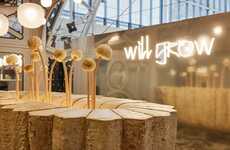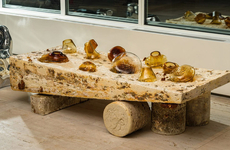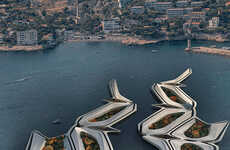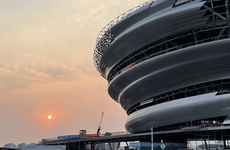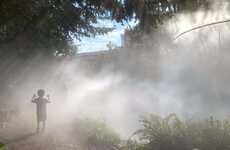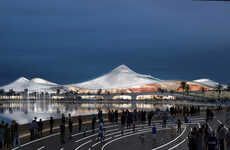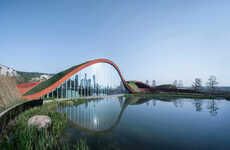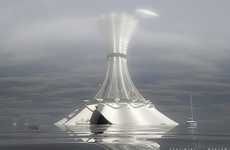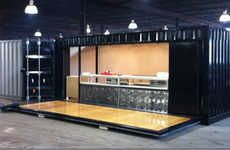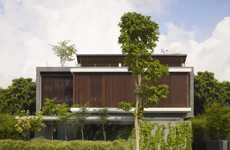
The Floating Earth by Ma Yansong Embraces the Earth
Meghan Young — January 27, 2012 — Art & Design
References: i-mad & contemporist
The Floating Earth by Ma Yansong happens to look like a stack of fungi. Similar to this Beijing-based artist and designer's Fungus Chairs, which is not too surprising considering the name, it appears that the i-MAD founder has an affinity for mushrooms. This creation, however, isn't meant to be a piece of furniture like the last, although it may look like a sculptural table. Instead, it is an architectural model.
Designed for Alessi, the Floating Earth by Ma Yansong is a tower that embraces its natural surroundings. As the designer poetically describes, it is "A boundless surface upon which all is reflected; the home, the city. An ever-expanding scope. Each rising layer, then, a tower storey, an unscripted space full of kinetic potential. But rooted in the still, same earth."
Designed for Alessi, the Floating Earth by Ma Yansong is a tower that embraces its natural surroundings. As the designer poetically describes, it is "A boundless surface upon which all is reflected; the home, the city. An ever-expanding scope. Each rising layer, then, a tower storey, an unscripted space full of kinetic potential. But rooted in the still, same earth."
Trend Themes
1. Fungus-like Architecture - The trend of designing architectural structures that mimic the shape and texture of fungi creates an opportunity for disruptive innovation in the sustainable construction industry.
2. Natural Environment Integration - Trending towards architecture that seamlessly integrates with nature creates opportunities for disruptive innovation in the real estate and hospitality industries, as environmentally-conscious consumers prioritize experiences in eco-friendly spaces.
3. Kinetic Architecture - The trend of designing buildings with kinetic potential creates opportunities for disruptive innovation in smart cities and urban planning, as architects explore ways to incorporate movement and interactivity into the built environment.
Industry Implications
1. Sustainable Construction - The trend of fungus-like architectural designs presents opportunities for disruptive innovation in sustainable construction, as builders look for cost-effective and environmentally-friendly alternatives to traditional building materials.
2. Real Estate - Trending towards natural environment integration creates disruptive innovation opportunities in the real estate industry, as buyers prioritize eco-friendly homes and buildings that offer a seamless connection with the outdoors.
3. Urban Planning - Designing buildings with kinetic potential creates opportunities for disruptive innovation in urban planning, as architects explore innovative ways to incorporate movement and interactivity into the urban environment to enhance the quality of life for city residents.
4.7
Score
Popularity
Activity
Freshness


